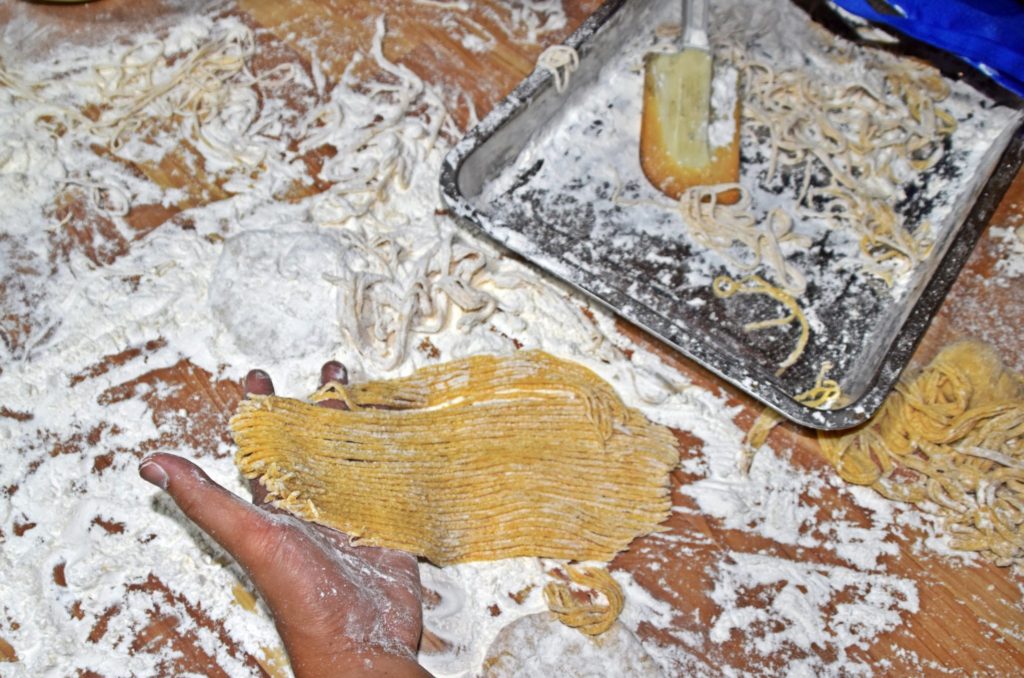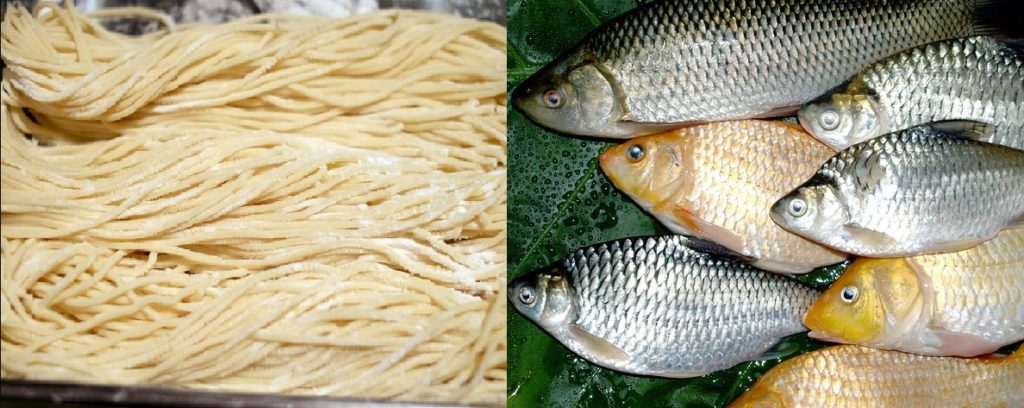The pioneers of this innovative dish are the women farmers of St. William Farmers’ Cooperative in Barangay Calaccad in Tabuk City.
According to Joyce Docyugen, Kalinga Provincial Fishery Officer, making tilapia noodles is similar to producing ordinary pasta. The only difference is that tilapia meat is added to the flour.
 The ingredients include two eggs for every two cups of all-purpose flour and pieces of tilapia meat. Once ready, allow the dough to rest for 30 minutes, flatten it, then roll it through the noodle machine to turn it into thin sheets of pasta. It can be cooked and served in any pasta recipe that one prefers.
The ingredients include two eggs for every two cups of all-purpose flour and pieces of tilapia meat. Once ready, allow the dough to rest for 30 minutes, flatten it, then roll it through the noodle machine to turn it into thin sheets of pasta. It can be cooked and served in any pasta recipe that one prefers.
In efforts to empower fisherfolk communities, the Bureau of Fisheries and Aquatic Resources-Cordillera Administrative Region (BFAR-CAR) supports the cooperative by providing them with a facility conducive to post-harvest processing, through the DA’s Special Area for Agricultural Development (SAAD) program.
 The best part of this initiative is that the tilapia comes from local fishponds, making it a more sustainable and affordable practice than importing the fish.
The best part of this initiative is that the tilapia comes from local fishponds, making it a more sustainable and affordable practice than importing the fish.
Until now, tilapia noodles have not been officially put on the market because of a lack of equipment and an unfinished food processing facility. Even so, the cooperative is prepared to sell it to those who want to try it.
According to mb.com.ph














